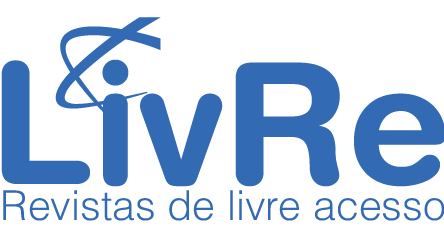ASPECTOS DIFERENCIAIS DAS UNIDADES DE TRADUÇÃO E TERMINOLÓGICA
DOI :
https://doi.org/10.26512/belasinfieis.v2.n2.2013.11239Mots-clés :
Tradução, Terminologia, Glossário temáticoRésumé
Durante o estudo do glossário temático de Saúde Suplementar do Ministério da Saúde, observou-se que as unidades terminológica e de tradução não tinham a mesma configuração e, a fim de abordar essas unidades também foi necessário fazer estudo sobre equivalência. Foi realizada pesquisa nos autores contemporâneos, para estabelecer as diferenças entre essas unidades, apontando os objetos de interesse particulares a cada uma delas, suas teorias e formas de delimitação. Entendemos que a equivalência trata de problemas e da estrutura da língua e dos seus aspectos socioculturais e deve ser contextualizada, que a unidade de tradução é uma unidade flexível que depende do momento de reflexão do tradutor e a unidade terminológica é uma unidade com delimitação fixada pelos próprios especialistas da área em estudo.
Téléchargements
Références
ALBIR, Hurtado. Traductión y traductología.Madrid: Ediciones Cátedra,2001, 695 pp.
ALVES, Fábio. (2004) Tradução, cognição e tecnologia: investigando a interface entre o desempenho do tradutor e a tradução assistida por computador. Cadernos de tradução. V. 2. No. 14. Florianópolis. 2004.
ALVES, Fábio; MAGALHÃES, Celia; PAGANO, Adriana. Traduzir com Autonomia: estratégias para o tradutor em formação. São Paulo: Contexto, 2000.
AUBERT, Francis Henrik. Tradução técnico-científica e terminologia: um ensaio exploratório de uma via de mão dupla.TradTerm:7, 2001. P. 41-52.
BAKER, Mona. In other words: a coursebook on translation. London and New York:Routledge.1992.
BAKER, Mona. Routledge Encyclopedia of Translation Studies. New York:Routledge, 2009.
BARROS, Lídia Almeida. Curso básico de terminologia.São Paulo: Edusp, 2004.
CABRÉ, M.T. La terminología -teoria, metodología, aplicaciones(trad. castelhana de Carles Tebé). Barcelona: Editorial Antártida/Empúries, 529 p, 1993.
CATFORD, John Cunnison. Uma Teoria Lingüística da Tradução. Campinas: Cultrix,1980.
DUBUC, Robert. Manuel pratique de terminologie. Linguatech: Montreal, 4e édition2002.
GUIDÈRE, Mathieu. Introduction à la traductologie.Bélgica: de Boeck,2. Ed, 2011.
ISO 1087:1990”“Terminology ”“Vocabulary.
ISO 1087:2000”“Terminology work ”“Vocabulary ”“Part 1: Theory and application.
KRIEGER, Maria da Graça & FINATTO, Maria José Bocorny. Introdução à Terminologia: teoria e prática. São Paulo: Contexto,2004.
PAVEL, Sílvia; NOLET, Diane. Manual de Terminologia. Trad. de FAULSTICH, Enilde. [online]. Disponível em: www.translationsbureau.gc.ca.PYM, Anthony. Exploring translation theories. Landon and New York. Routledge. 2010.
SAGER, Juan Carlos. Curso Prático sobre el procesamiento de la terminología Fundación Germán Sánchez Ruipérez.Madrid. Pirámide. 1993.
WELKER, Herbert Andreas. Sobre lexicografia e tradução. Disponível em: http://www.let.unb.br/hawelker/images/stories/professores/documentos/lextrad.pdf
Téléchargements
Publié-e
Comment citer
Numéro
Rubrique
Licence
Copyright Statement
Given the public access to this journal, the texts are free to use but requires the recognition of the original authorship and initial publication in this journal to be properly stated.
The journal allows the use of works published for non-commercial purposes, including the right to submit the work to publicly accessible databases. Published contributions are the sole and exclusive responsibility of the author(s).
- When submitting papers to be evaluated by the Belas Infiéis journal, the author(s):
- Declare that the contents of the contributions are original and of their original creation, being entirely responsible for their content if there is an objection by third parties.
- Claim to be aware that they should not commit academic plagiarism.
- Declare that the manuscript has not been published, completely or partially, in Portuguese or another language. If it is a translation it should be submitted to the Translated Articles section.
- Declare that the manuscript is not being evaluated by other journals.
- Declare that the manuscript was not submitted to another journal simultaneously.
- Commit(s) to inform the journal of any kind of error or inaccuracy in their contribution (published, in evaluation or in editing) and to collaborate with the editors to make due corrections of the article (when in evaluation or editing) or erratum/retraction (after publication).
- Declare that there is no conflict of interest regarding the published work.
- Authorize its release if it is accepted for publication without any kind of monetary compensation.
- Agree to assign non-exclusive rights to publication to the magazine, remaining free to make their contribution available in other media as long as the publication of the first version in Belas Infiéis magazine is mentioned. They also authorize Belas Infiéis to assign their texts for reproduction in content indexers, virtual libraries and similar platforms.
- Maintain copyright and grant the journal the right of first publication, the work being licensed under theCreative Commons Attribution License.
- Is/Are allowed and encouraged to publish and distribute their work online after the editorial process, which may increase the impact and citation of the published work.
- Authorize the editorial team to make textual adjustments and to adapt the article to the publication rules, when necessary.



















